After acne, ugly scars often appear on the face and people wonder how to get rid of scars. They not only worsen the aesthetic appearance of the face, but can also cause re-inflammation.
Regenerating preparations for acne scars
Contratubex-gel
The drug contains onion extract and sodium heparin. Together with other substances, they help stop the formation of scar tissue and relieve inflammation. Contractubex helps fight young scars. The drug is often used in cosmetic procedures.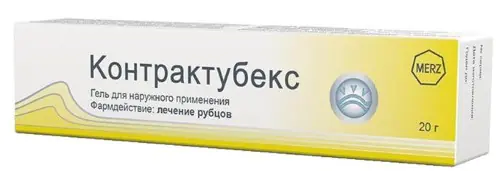
The gel should be used daily, 2 times every 12 hours for 2 months.
Scar Aesthetic
The cream contains vitamin A, onion extract, various antioxidants and natural stimulators of cellular renewal. For deep and old scars, cosmetologists recommend using the drug in combination with silicone stickers.
Apply the cream twice a day to dry skin. Time of use – 2-3 months.
Kelo-cote
The base of the substance is silicone. The gel forms a protective film on the surface of the scar. This allows you to protect it from the negative influences of the external environment and stop the growth of scar tissue.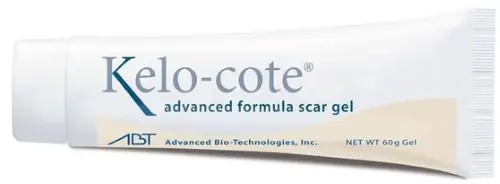
At the same time, the gel has a strong moisturizing effect.
The drug should be applied twice a day to the scar area in a very thin layer. Course – 2-3 months.
Zeraderm
In addition to silicone, the gel contains coenzymes, anti-inflammatory and anti-allergenic components. Using a cotton swab, the gel should be applied to cleansed areas of skin with scars using massage movements twice within 24 hours.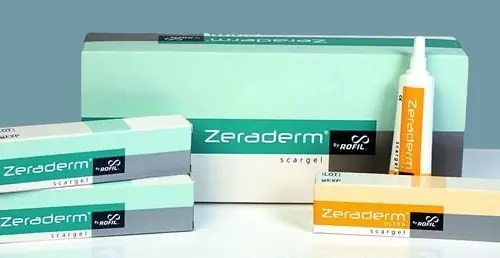
The course of application is from 2 weeks to 6 months, depending on the condition of the scar.
Kelofibrase
The main component is urea. It softens scar tissue, brightens it and makes the skin more elastic. Camphor improves blood circulation and stops skin atrophy.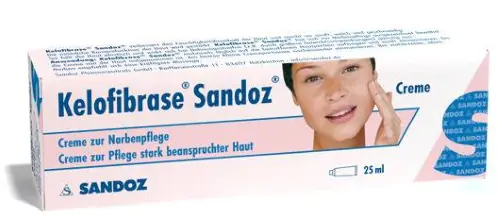
The drug should be applied 2-4 times during the day using massage movements. For serious scars, use compresses.
Fermenkol
The drug contains 9 collagenase components. When used regularly, they destroy the collagen and hyaluronic acid that form the scar. And then new skin fibers are formed from the resulting splitting materials.
For application to scars, the gel is used daily for 1 month.
Then he takes a break and the course is repeated.
Mederma
After acne on the face, it is necessary to quickly stop inflammation and the spread of scarring to healthy tissue. Mederma helps with the problem of how to get rid of scars and protect the skin.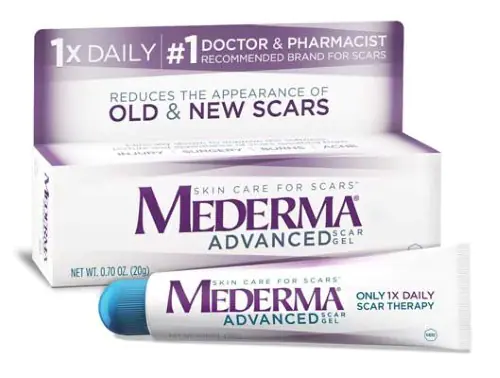
Apply the cream daily (2-4) using pressing movements. The course can last from 3 to 6 months.
Liquid cream Skarguard
It contains silicone, vitamin E and hydrocortisone. Externally, the cream looks like a bottle of nail polish. The substance is applied to the scars using a brush.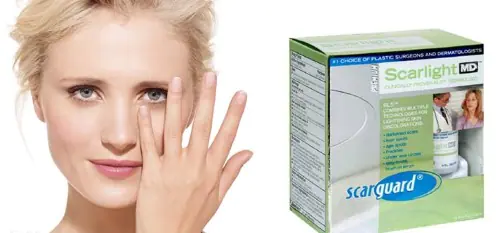
You need to use liquid cream 2 times a day. The course is from one month to six months.
Cream Dermatix
The basis of the drug is polymeric organosilicon compounds. It is used to restore skin with fresh scars and scars. The cream can further reduce pain and itching at the site of skin damage.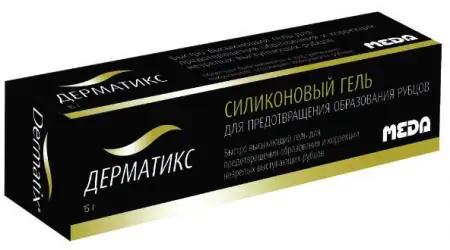
The cream is applied 2 times a day (1 time using a bandage). The course is at least 2 months.
Piyasil
The active ingredient of the product is mink oil. These are processed subcutaneous tissues of an animal. They help cope with scars due to their high similarity to human fibers.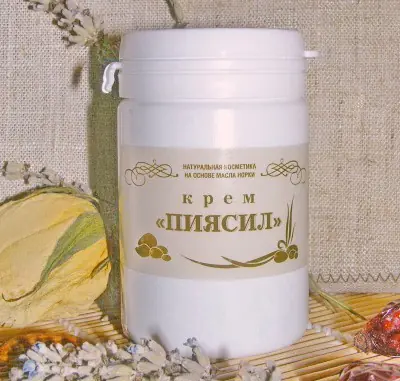
The drug must be applied at least 3 times a day.
Inexpensive pharmaceutical remedies for acne scars
Clearwin
In cosmetology, Clearvin is used to eliminate many facial skin imperfections: from age spots to acne scars. The drug contains substances that are used in Indian folk medicine: aloe vera, harad, turmeric, vacha, neem, etc.
The first results are noticed after 1 month, but you need to use the product for at least 2 months.
Sledotsid ointment
The product removes inflammation and restores normal skin color in places where scars form. 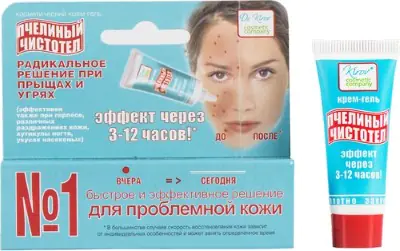
It is recommended to apply it several times a day until the scars lighten to the shade of healthy skin.
Balm Rescuer
The active ingredient of the drug is milk lipids. They form a protective film, moisturize and nourish the skin. Natural beeswax and sea buckthorn oil help soften rough tissues.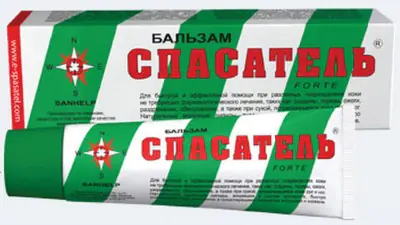
The balm is used to lubricate scars and to create compression packs.
Badyaga
To prepare the product, bodyagi powder and hydrogen peroxide are mixed. The consistency of the mask should resemble thick porridge. Apply the product to the skin for 5-7 minutes.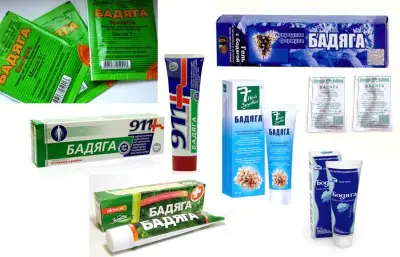
You can repeat the procedure no more than once a week, as the mask causes peeling of the skin. Course - 10 procedures.
Vishnevsky ointment (Balsamic Liniment)
The composition of the drug includes tar, castor oil and xeroform. They help regenerate tissue, reduce scar volume and protect the skin from the appearance of new acne.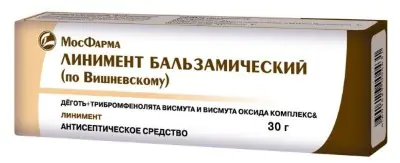
The product is used to apply compresses. They need to be done every day.
Homemade masks for acne scars
Tea tree oil mask
One part of oil is mixed with 3 parts of boiled water. The composition is applied daily to the scars. To prevent healthy tissue from being damaged by oil, a cotton swab is used for application.
Clay mask
To create a mask, you need to mix cosmetic clay, water and lemon juice in a ratio of 2:2:1. The product is applied in a very dense layer to the entire surface of the skin.
The mask is washed off with a damp cotton pad after 25 minutes. The course consists of 12 procedures, which can be repeated after 3 days.
Tomato mask
Tomato juice contains a lot of antioxidants and vitamins, which have a positive effect on blood circulation in the skin and subcutaneous tissue. It is recommended to wipe your face with frozen tomato juice every day, and apply tomato puree for 20-30 minutes 2-3 times a week.
Protein-cucumber mask
The white should be beaten vigorously until foamy, and one medium cucumber, along with its peel, should be crushed to a puree. The protein-cucumber mixture is applied to the face for 15 minutes.
Fermented milk mask
Mix one part each of natural yogurt, chopped oatmeal and low-fat sour cream. Before applying to the face, add half of the lemon juice to the mixture. The mask should be washed off after 15 minutes.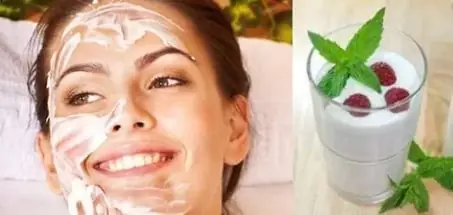
It is enough to do this mask every other day for 1 month.
Pineapple mask
One medium pineapple is cut into pieces and then pureed in a blender. After this, the mass is applied to the face and lightly rubbed into problem areas. Vitamin C activates collagen production, and fruit acids soften scar tissue. You can make a mask no more than 1-2 times a week.
Homemade ointments against scars
Cabbage ointment
A few leaves of fresh cabbage are ground in a blender until pureed. Then you need to add a few tablespoons of any honey to the mixture. The consistency of the resulting product should resemble thick sour cream. Cabbage ointment is stored only in the refrigerator. You need to apply it to your face at least 2 times a day for 2 months.
Ointment with propolis
An equal amount of propolis and sea buckthorn oil must be mixed and melted in a water bath until the liquid becomes homogeneous. Then the ointment cools.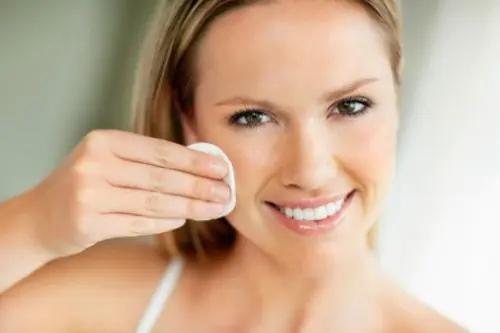
It is recommended to apply the product to the face several times a day, always in the morning and evening.
Nutmeg and milk ointment
2 tbsp. l of powdered nutmeg should be mixed with 7 tbsp. l. liquid honey and 2 tbsp. l full fat fresh milk. The ointment must be thoroughly mixed so that the components turn into a homogeneous mass. The ointment is applied daily (for 15-20 minutes) until the scars become less noticeable.
Onion ointment
To create onion ointment you will need one large onion, a pinch of salt and 2 tsp. l. grated baby soap. You need to add salt and soap to a glass of water, and then finely grate the onion. The mixture should be simmered for about 15 minutes over low heat and then passed through cheesecloth.
The ointment can be applied to problem areas 1-2 times a day. The course of treatment is 1.5-2 months (repeated if necessary).
Traditional recipes for scars and acne
Baking soda
Cosmetologists recommend using soda if new acne appears on the skin, as it is an excellent antiseptic.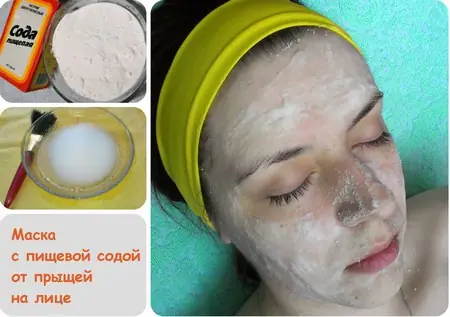
To prepare the product, you need to dissolve a few tablespoons of soda in water. Then the substance is applied to the skin using massage movements. After 1 minute, the soda is washed off. It is recommended to use the product no more than 2 times every 7 days, as soda dries out the skin.
Rosehip oil
To get rid of shortcomings, it is recommended to conduct self-massage sessions with rosehip essential oil. Using a napkin, the substance must be applied to the damaged areas. After it has been absorbed a little, massage the skin with your fingertips and lightly massage the oil into the scar tissue. Procedures can be performed several times a day or once before bedtime.
Parsley
In the question of how to get rid of acne scars on the face, rubbing with parsley ice will help. To do this, you need to prepare a decoction: pour half a glass of finely chopped parsley with boiling water. After cooling, the solution is poured into ice cube trays and frozen.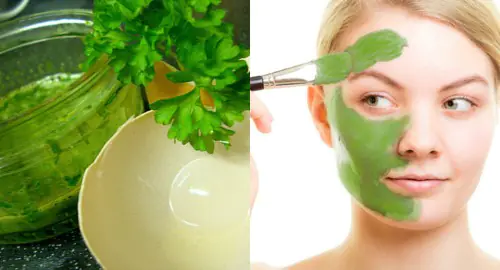
You can use ice every day after washing your face in the morning until the scars become smaller.
Potassium permangantsovka
Potassium permanganate is a powerful oxidizing agent that is a home alternative to chemical peeling. To prepare the product, potassium permanganate must be dissolved in water until it turns purple. Then the solution is applied to the scars using a cotton swab, avoiding undamaged tissue.
It is recommended to apply potassium permanganate only to the hands or back, as it stains the skin. Course - 1-1.5 months 1-3 times every 8 days.
Hydrogen peroxide
Hydrogen peroxide softens and lightens scar tissue. This helps make acne scars less noticeable. A mixture of peroxide and baby powder helps provide a slight polishing effect. To do this, peroxide and powder are mixed 1 to 3.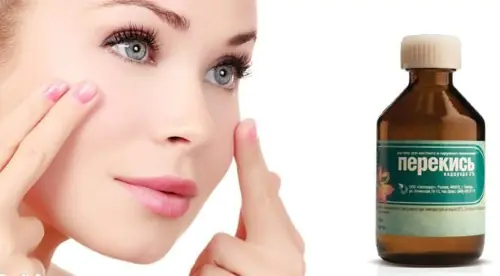
The mixture should be applied to the face every day and left for 30 minutes. The course is more than 1 month.
Cosmetic and medical methods
Laser resurfacing
Laser resurfacing is a safe and painless method, but has a high cost. The laser beam cuts off the top layers of skin and smoothes out the scar.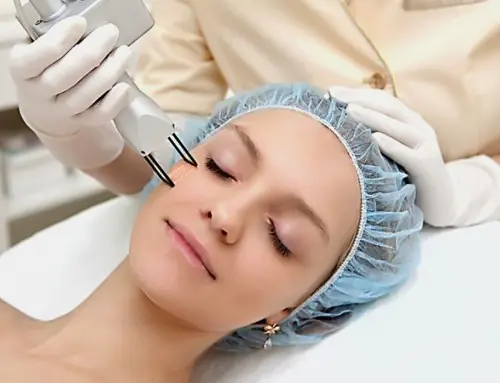
In terms of methodology, this method is similar to dermabrasion, but is more gentle.
The session can take from half an hour to 1 hour depending on the size of the scar. Repeated procedures can be carried out only after complete healing of the skin.
Chemical peeling
In a chemical peel, acids are used to attack the scar tissue. They soften scars, leaving the skin softer and smoother. It is quite difficult to completely get rid of scars in this way, but after softening the skin acquires a lighter shade of healthy tissue. The number of chemical peel sessions depends on the number of scars, skin type and condition.
Dermabrasion
Dermabrasion is one of the most effective procedures for getting rid of scars. During this procedure, the skin is “polished” using special devices – cutters. During dermabrasion, a person experiences severe pain, so it is performed only under local anesthesia.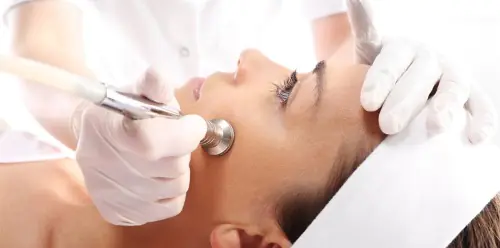
If acne scars are very deep, they can be cut off with a scalpel first.
To completely get rid of scars, you may need from 3 to 7 procedures. They can only be carried out with a break of one month.
Mesotherapy
Mesotherapy will help you get rid of scars on your face.
Acne scars can be treated in this way using two options:
- injection administration of the drug;
- use of special masks.
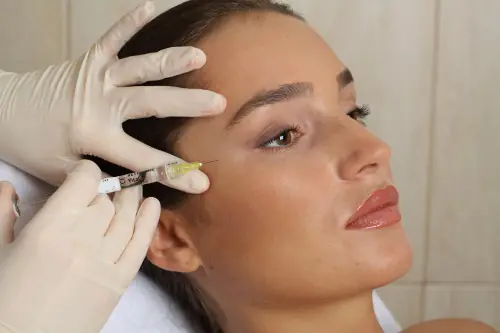
The latter can only be used for minor skin lesions. In the second case, using special devices, thin punctures are made on the skin through which the drug is injected. It is able to change the structure of fibrous tissue and gradually destroy it.
In most cases, 10 procedures with short breaks are sufficient, the time of which is set by the cosmetologist. In case of serious damage to the skin and frequent appearance of scars, the course is carried out once a year.
Ozone therapy
Ozone therapy uses ozone, which is injected under the skin. The substance improves metabolism and accelerates the formation of new tissues. In addition, adipose tissue is broken down and the skin is smoothed.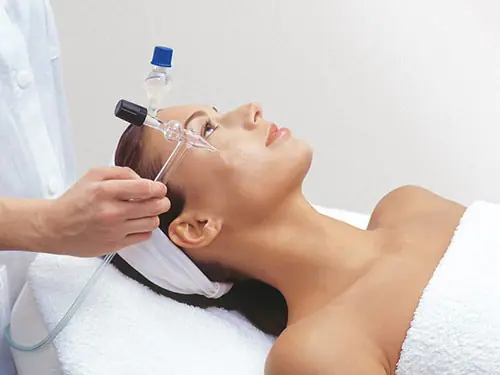
As a means of getting rid of facial scars, ozone therapy is useful both after acne treatment and during the appearance of acne. The substance has a strong antiseptic effect. Depending on the size and density of the scars, from 5 to 15 ozone therapy procedures can be prescribed.
To successfully combat scars on the face after acne formation, cosmetologists recommend using a set of measures. To achieve a quick effect, pharmaceutical products must be combined with traditional medicine methods and cosmetic procedures. You should also remember about regular skin care, depending on its type and sensitivity.
Video on how to get rid of acne scars on your face
Find out how to get rid of acne marks in the video:
10 ways to get rid of acne marks:
I tried a lot of different remedies, but little helped. The only suitable remedy for me was Contratubex.
Many people dream of beautiful and well-groomed skin, but anyone can face difficulties such as acne and comedones, regardless of gender and age. Sometimes this is not limited to this, and after the pustules disappear, residual effects in the form of red or dark spots and even scars can be observed. Among the large number of medical and cosmetic drugs, it is important to understand which ointment for acne marks is best and what procedures are most effective to cure them. But in order to choose the right treatment package, you first need to understand how spots and scars arise after pustules.
What is post-acne and the reasons for its appearance?
Acne spots are secondary congestive skin phenomena that appear as a result of acne treatment or a prolonged inflammatory process. As a result, injured tissue is replaced by scar or connective tissue. Typically, acne marks have a reddish, blue or brown tint. 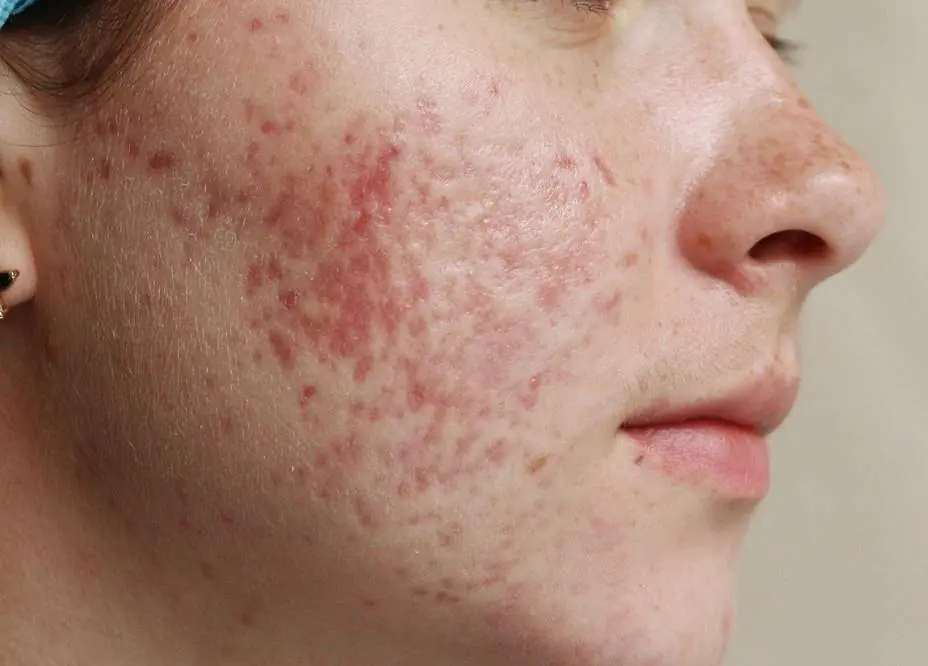
There are several types of spots from pustules that may appear after healing from acne and pustular inflammation on the upper layer of the epidermis:
- Cuperosis (changes in blood vessels). Disruption of capillaries, and as a result of blood circulation and the appearance of vascular webs and redness. Those with thin and sensitive skin are most susceptible. Appears as a result of mechanical action, frequent and protracted inflammatory processes in the dermis.
- Scarring. They are formed by the growth of connective scar tissue in the lower layers of the skin at the site of protracted inflammatory pustular rashes. They usually have the shape of craters. They are most effectively treated when undergoing a course of salon procedures.
- Dyschromia (abscess marks) is a change in the pigmentation of the upper layer of the epidermis due to a deficiency or excess of melanin. The color depends on the depth of the inflamed pustule. Accordingly, the deeper the lesion, the darker the post-acne it leaves on the skin of the face. Ointment for acne spots, masks, and scrubbing can help get rid of mildly pigmented marks.
- Enlarged pores. A consequence of increased activity of the sebaceous glands during an exacerbation.
Basically, similar consequences from pustules and comedones have a joint manifestation on the dermis and require complex treatment. The process is rarely quick, so you shouldn't expect results in a week. A complete cure can be achieved if you pay attention to the existing problem in time and take appropriate measures.
There are several reasons for the appearance of traces of inflammatory processes on the skin of the face:
- large scale of damage to the dermis;
- deep location of pustules;
- injury to the protective layer during mechanical cleaning of the epidermis;
- improper treatment of the inflammatory process;
- lack of treatment as such;
- predisposition to facial skin that is too sensitive to inflammatory processes.
How to prevent the consequences of acne
To minimize the possibility of acne spots, you need to treat them promptly. The optimal solution is to combine home and salon care:
- use high-quality cleansers that regulate the functioning of the sebaceous glands;
- consult a specialist about the causes of acne and comedones;
- regularly visit a beauty salon for professional cleaning;
- use creams with a sun protection factor of at least 30 SPF to avoid changes in pigmentation of the epidermis;
- At the time of post-acne treatment, decorative cosmetics should be abandoned.
Types of remedies for scars and blemishes on the face
There is a huge variety of products, drugs and services to get rid of the consequences of congestive inflammation on the face in the form of spots and scars.
Pharmacy products
- Hydrogen peroxide 3%. Helps disinfect the surface of the epidermis and accelerate the healing of the skin from post-acne.
- Salicylic alcohol. Used to disinfect the protective layer of the skin and before subsequent application of a remedy for red spots after acne.
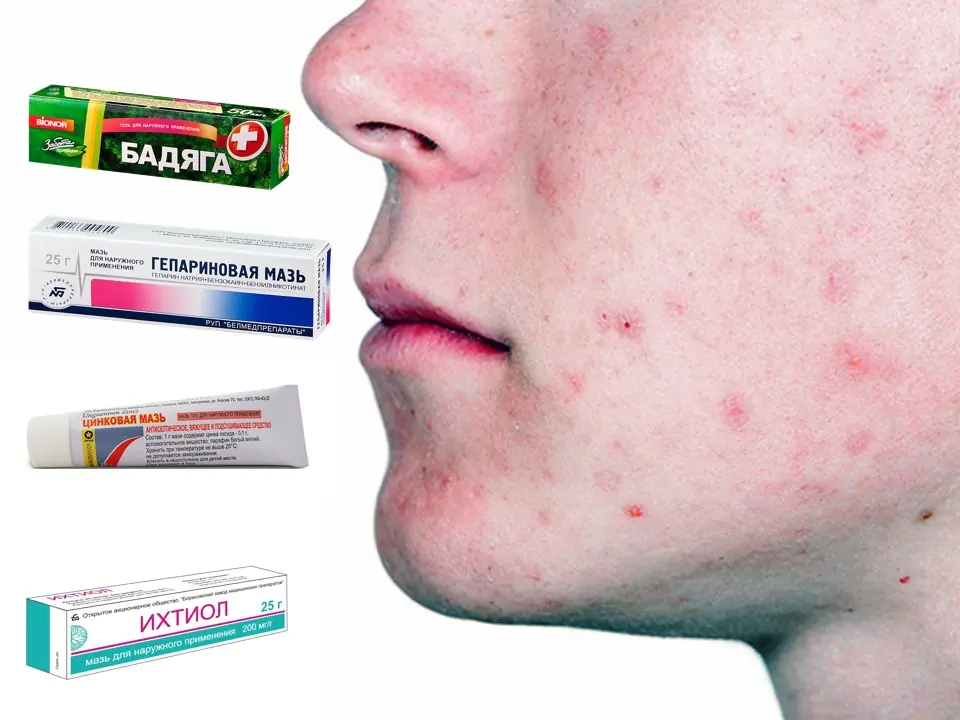
- Ointment for acne marks Vishnevsky. A very common and effective remedy for external use. Has anti-inflammatory, wound-healing, disinfecting effects. Use 2 times a day, apply pointwise to problem areas. The course of treatment is for 20 days.
- Heparin ointment for acne spots accelerates the regeneration of the protective covering, has an analgesic, softening and anti-inflammatory effect. Apply to the lesions 3 times a day for one week.
- Contratubeks. This ointment for acne marks on the face acts as a softening, regenerating and disinfectant. Apply to marks or scars from pustules 2-3 times a day. The course of treatment can vary from 3 months for new scars to 6 months for stagnant scars.
- Badyaga. Treats inflammation, improves elasticity and blood supply to the upper layer of the dermis, removes dead scales of the epidermis. Spot application to the scar for half an hour, followed by rinsing. If it burns, wash it off immediately.
- Kelofibrase. Eliminates old scars and spots, thanks to it the skin becomes more elastic and fresh. The course of application can vary from 6 weeks to six months, depending on the age of the scars.
- Clearvin. The cream acts as a moisturizing, regenerating, softening, healing agent. Rub into skin 2 times a day for 2 months.
Folk remedies
- A mask made from whipped egg white with the addition of 2 teaspoons of lemon juice will help against dark spots and scars. This mixture perfectly whitens the skin. If there is no need to bleach your entire face, you can use this mixture and apply it directly to the marks, leave for 15 minutes, then rinse with cool water.
- A parsley mask, rich in vitamins and microelements, refreshes the skin and accelerates the healing process of acne spots. Finely chop, mash a little until the juice appears, then apply to the face or acne. Wash off after 15 minutes.
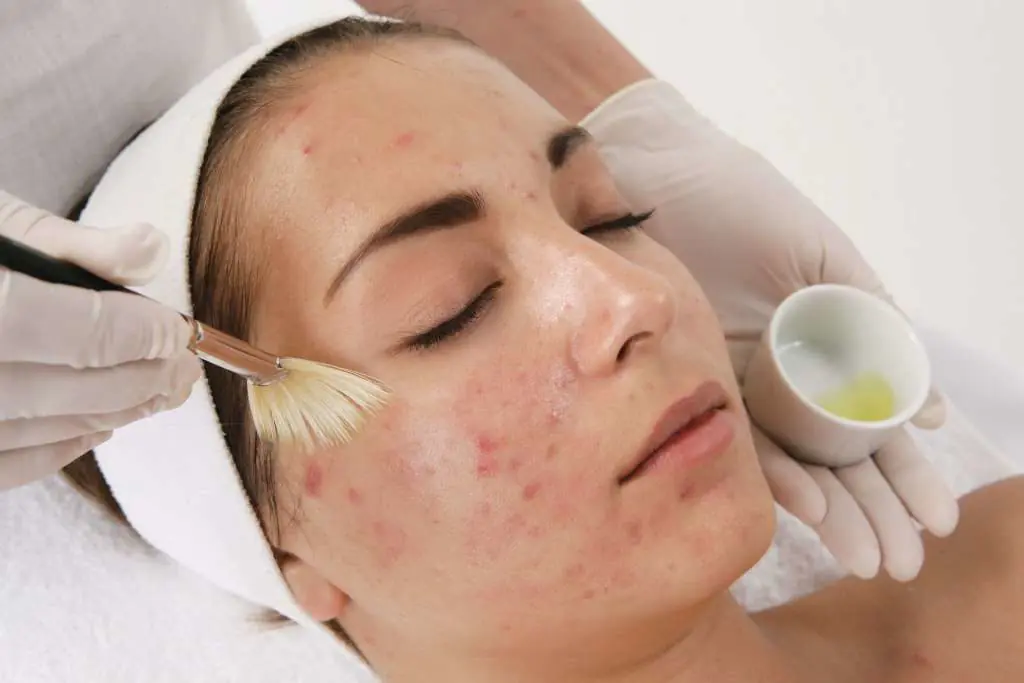
- A mixture of tomato pulp, potato starch and grated cucumber is very effective for healing the epidermis from red marks after acne. The mask is prepared quite simply - 3 parts tomato, 1 part starch and 1 part cucumber. Apply for 15 minutes, then wash.
- St. John's wort tincture, which is famous for its healing and disinfecting properties, is very effective. Add 1 tablespoon of ethyl alcohol to 2 tablespoons of herbs and leave to brew in a dark, cool place for 10 days. Wipe stains daily until they disappear completely.
- Masks based on cosmetic clays (blue, green) will also be very effective, as they perfectly relieve skin inflammation and cleanse. To enhance the effect of clay, you can add kefir to such masks (it soothes the skin well), aromatic oils of tea tree, lemon, orange, rosemary, ylang-ylang.
Salon treatments
- Chemical peeling. Gentle modern formulations of products are used, consisting of retinol, fruit, azelaic and salicylic acids. After use, it is advisable to apply a sunscreen with an SPF of at least 30 to your face.
- Mesotherapy. Injecting the face with a vitamin cocktail. Helps improve complexion and tighten enlarged pores.
- Biorevitalization. Injections with authentic hyaluronic acid into the lower layers of the epidermis. Thanks to this, the skin is quickly moisturized and the cells' vital processes are improved. The restoration of the protective cover occurs through the regeneration of one’s own skin.
- Laser cleaning. The non-contact technique helps tighten pores, removes dead cells, normalizes color and rejuvenates the protective covering.

- Ultrasonic cleaning. An effective procedure for getting rid of post-acne. Gently removes the top layer of dermis. Normalizes metabolism in the epidermis. Improves the condition of the protective cover, evens out color, increases firmness and elasticity.
- Vacuum cleaning. Cleanses pores of impurities, tightens the skin and saturates it with oxygen. Easily removes old cells, thereby normalizing color.
- LED therapy. Using different colors of lamps you can achieve the desired result. Green helps improve skin tone and heal post-acne; Red – causes the epidermis to intensively produce collagen; blue – destroys areas of skin abscesses.
- Dermabrasion. Using this method of cleansing the dermis, scars and post-operative scars, as well as age wrinkles, can be effectively removed. The method of deep cleansing the skin removes dead particles of the epidermis.
Prevention recommendations
For the post-acne problem to disappear, you need to:
- ensure daily proper hygiene of the facial skin;
- before taking any step to treat or cleanse your facial skin, consult a dermatologist or cosmetologist for an individual selection of procedures and medications;
- entrust the cleaning of the protective cover to a qualified specialist;
- It is most effective to carry out comprehensive care, combining home procedures and salon services;
- When carrying out mechanical cleaning yourself, observe hand hygiene.
If prevention, salon treatment and ointment for acne marks do not give the desired result, you need to contact specialists of another profile: endocrinologist, gastroenterologist, infectious disease specialist and gynecologist. In any case, do not despair, because post-acne can be cured, you just need to be patient.
All iLive content is reviewed by medical experts to ensure it is as accurate and factual as possible.
We have strict sourcing guidelines and only link to reputable sites, academic research institutions and, where possible, proven medical research. Please note that the numbers in parentheses ([1], [2], etc.) are clickable links to such studies.
If you believe that any of our content is inaccurate, out of date, or otherwise questionable, please select it and press Ctrl + Enter.
The only thing worse than acne is the scars left by it. If acne is treated correctly and in a timely manner, scars do not have time to form; To prevent such consequences, there are many cosmetics and pharmaceutical products. But if the skin has undergone complex inflammation and damage, then the tissues do not have time to renew themselves, and in place of the acne, blemishes of varying intensity remain. They can be reduced or completely removed by various methods, including the simplest - by applying special creams, gels or ointments to problem areas.
[1], [2], [3]
ATX code
Pharmacological group
pharmachologic effect
Indications for the use of ointment for acne scars
Indications for the use of ointments for acne scars - the presence of visible, but not too deep marks after acne:
- normotrophic (pale scars at the level of a healthy surface);
- atrophic (depressions);
- hypertrophic and keloid (convex).
Hypertrophic bulges appear at the site of the lesion; keloids grow beyond its limits. The drugs should reduce the size of scars, make them invisible, soften and resolve. Ointments applied to fresh wounds prevent the growth of scar tissue.
Ointments are a relatively inexpensive and accessible way to get rid of scar defects; in addition, they can be used at home, without additional costs for travel and service in salons and clinics. For deep defects, more radical treatment methods are used.
[4]
Release form
The main purpose of ointments for acne scars is to prevent or eliminate “post-acne” defects: destroy bacteria that lead to inflammation, resolve scars, stimulate the regeneration processes of epidermal cells.
Names of ointments for acne scars:
- Contratubex - renews the skin, softens scars and protects against the appearance of new defects.
- Sledocyte - reduces inflammation, stimulates regeneration and the process of eliminating old scars, protects against the formation of new ones.
- Dermatix - helps get rid of old defects; softens and resolves scar mass.
- Liquid Scarquard cream, applied with a special brush, dries and forms a protective film on the face.
- Klivrin - based on medicinal herbs. The components penetrate into the deep layers of the skin, saturate it with moisture, oxygen, vitamins and antioxidants.
- Kelo-Kot (gel or spray) – ensures the resorption of scars and smoothes the skin under the film, preventing the growth of scar tissue.
- Kelofibrase – promotes the prevention and resorption of scars.
- Zeraderm ultra - forms a water-repellent film, improves the supply of oxygen to the problem area, and protects from sunlight.
- Fermenkol is effective for both fresh and old scars.
- Mederma is a particularly useful remedy for atrophic scars.
- Broad-spectrum heparin ointment.
Heparin ointment
Heparin ointment has antithrombotic and analgesic properties, helps eliminate hematomas, heal wounds, get rid of acne and other skin defects.
Heparin ointment for acne scars is also very useful because:
- destroys harmful microorganisms in the subcutaneous area,
- relieves pain,
- disinfects wounds.
By dilating blood vessels, the drug prevents the formation of acne, and the lack of odor makes its use more comfortable compared to some other ointments. It is recommended to apply the medicinal ointment several times a day, for about a week. You can purchase the over-the-counter product at all pharmacies.
[5], [6], [7], [8], [9]
Vishnevsky ointment
The commonly known Vishnevsky ointment has a slightly different official name: balsamic liniment according to Vishnevsky. This is an external medicine with a wide spectrum of action: antiseptic, drying, regenerating, anti-inflammatory, emollient, decongestant, disinfectant. Promptly eliminates purulent deposits, after which the healing process is activated.
The medicinal properties are provided by a combination of active ingredients:
- birch tar,
- xeroform,
- castor oil.
The ointment is used for the treatment of purulent skin lesions of various etiologies, necrosis, inflammation of the lymph nodes with the formation of pus, trophic ulcers, and vascular diseases of the lower extremities. It is applied in a thin layer or on a sterile napkin, under a bandage, twice a day: morning and evening.
One of the undoubted advantages of the medicine is the minimum of side effects that can occur only with long-term use. You should know that tar makes the skin especially sensitive to ultraviolet radiation; Because of this, the areas of the face treated with ointment must be protected from sunlight.
Due to their high efficiency, ointments “forgive” a specific, not very pleasant odor.
Ointments for acne scars on the face
In a fairly voluminous list of ointments for acne scars on the face, a special place is occupied by products that include badyaga - a dried and ground freshwater sponge. This is a proven remedy for bruises, scars after surgical procedures, wounds, acne and other similar blemishes. Both the colonies of sponges and the powder have a greenish color and a not entirely pleasant smell, but badyagi has a centuries-old history of use in folk recipes, including in cosmetic ointments for acne scars.
Why are pharmacists and cosmetologists interested in unsightly-looking aquatic colonies of either plants or motionless animals? The main ingredient of badyagi is silicon, which has many positive qualities for the skin. Thus, silicon in a cosmetic product:
- cleanses the surface of dead epidermis;
- improves blood circulation;
- powerfully stimulates elastin production;
- promotes saturation of new cells with oxygen;
- resolves spots, scars and scars, including old ones.
Badyagu is used for cosmetic purposes in powder form independently, at home, but certainly after consultation with a specialist. The procedure is not easy, it takes some time from the beginning until the results appear, so you need to be patient and be prepared for consistent actions.
To eliminate flaws, it is easier to use a ready-made product, for example, Badyaga Forte gel, having previously tested it for allergies. Normally, Badyaga applied to the elbow gives a slight burning or tingling sensation, but not severe itching.
Rub the gel ointment onto problem areas of the face using massage movements and leave for 10 - 15 minutes. The procedure is recommended to be carried out twice a week, excluding the use of other drugs for the duration of treatment.
Badyaga is also effective for eliminating skin problems of a different nature. In such cases, the number of recommended procedures may be different.
Like any other disease, acne blemishes are easier to prevent than to treat. To prevent scar formation you need to:
- do not ignore the problem;
- do not squeeze pimples to avoid the spread of infection;
- do not self-medicate.
If post-acne, for some reason, cannot be treated immediately with ointments for acne scars, then facial defects can be temporarily hidden under a layer of foundation. This should absolutely not be done only if the process of acne formation continues. The application of foundation is also contraindicated during the heat (dry powder is better), and in winter, a cream with a moisturizing effect should be selected for camouflage.
Good results are obtained by using home remedies made from natural ingredients: scrubs and masks made of clay, lotions and rubbing with essential oils and herbal decoctions, apple cider vinegar, aloe and cucumber juice (especially for oily skin), ice from the infusion of fragrant woodruff, parsley, calendula. It is better for the skin if these procedures are performed during the cold season, when it is less sensitive to external factors.
Among the best ready-made ointments for facial scars after acne is the Contratubeks gel, which many put in first place.
It combines three active substances that effectively complement each other:
- heparin,
- allantoin,
- extract of hot onion.
As a result, damaged skin is restored, smoothed, becomes softer, more elastic; the inflammatory process slows down, itching and redness disappear, scar tissue softens and stops the formation of new cells.
Another drug that is effective against scars, red spots, and old scars is produced in Germany under the name Kelofibraze. The ointment contains urea, which controls the water balance and makes the face soft and smooth. The ointment removes fresh scars in six weeks (with regular rubbing twice with a five-minute massage); defects that have become old will have to be treated from several months to six months. Ointment compresses at night are also recommended.
Pharmacodynamics
Pharmacodynamics of Vishnevsky ointment:
- tar has an antiseptic effect, irritates receptors and causes blood flow to activate the removal of exudate;
- xeroform has a detrimental effect on microorganisms, dries and astringents the skin in areas of inflammation;
- Castor oil helps active ingredients penetrate deeper and soften the skin.
As an auxiliary component, instead of the last ingredient, fish oil with similar properties is also used.
Pharmacodynamics of ointment "Kontratubeks":
- drawing onions prevents the development of connective tissue in problem areas;
- other components provide fibrinolytic, anti-inflammatory effects, soften scars and remove keratinized epidermis.
The components of ointments for scars act at the site of application and do not affect the entire body.
[10], [11], [12], [13], [14]
Pharmacokinetics
The active ingredients in acne scar ointments are intended for local action and do not penetrate into the general bloodstream. Accordingly, their pharmacokinetics are not of particular interest for study.
[15], [16], [17], [18], [19], [20]
Contraindications
Contraindications to the use of Vishnevsky ointment:
- hypersensitivity;
- large affected area;
- purulent cysts of the sebaceous glands;
- renal failure.
Both this and other ointments for acne scars are prohibited from being used in cases of necrosis, oncology, or purulent skin processes. It is risky to use them simultaneously with other pharmaceuticals.
[21], [22], [23], [24]
Side effects of ointment for acne scars
Since the products act locally and practically do not penetrate into the general bloodstream, side effects of ointments for acne scars are rare.
In some cases, local reactions are possible: nettle rash, irritation, itching, swelling - but only if the drug is used incorrectly or if you are hypersensitive to it.
[25], [26], [27]
Directions for use and doses
The method of application and dosage of ointments for acne scars depend on the depth of the problem. For greater effect, use compresses, tampons, and bandages. Sometimes ointments for acne scars are rubbed directly into problem areas, after cleansing the skin. The usual frequency is twice a day, but in each specific case the number of procedures may vary.
After the procedure, be sure to wash your hands properly. In case of contact with mucous membranes, they must be rinsed with plenty of water.
[28], [29], [30], [31], [32], [33], [34], [35]
Overdose
An overdose of ointments for acne scars results in rashes, sometimes swelling and other undesirable symptoms. In such cases, you should stop the procedures and consult your doctor about further actions.
[36], [37], [38], [39], [40], [41]



